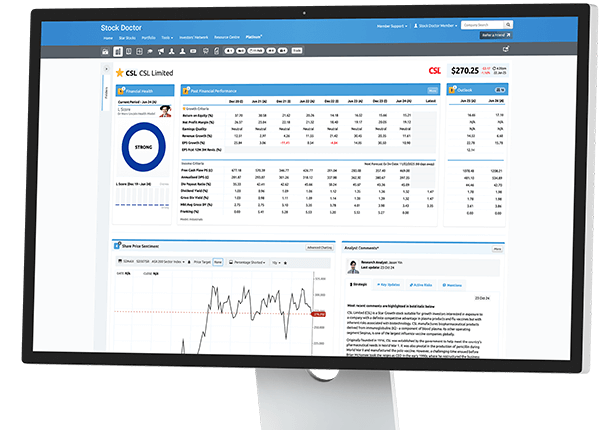A Conversation about Gold (1/2)
Gold prices continue to rise, and investors are scratching their heads as to why gold equities cannot keep up. The answer to that question is quite long and technical. In this article, I will attempt to discuss a few reasons as to why I believe the divergence between gold prices and gold mining stocks over time may be warranted on an index level. The chart below tracks the gold price (blue) and the GDX gold miners index (white) over a 5-year time frame, highlighting the current dislocation.

Source: Bloomberg
This will be a two-part series on gold stocks, with this instalment focusing on some of the challenges in the gold mining industry and why, broadly speaking, stocks are underperforming metal prices at present.
“Cost to produce” isn’t the only cost to look at…
Whilst gold prices have effectively doubled in the last 10 years from ~US$1,200/oz to ~US$2,400/oz, the benefit to profits has been severely masked due to a rapid rise in costs.
Miners report costs in many ways. Operating costs, cash costs, all in sustaining costs (AISC), just to name a few. These cost headings all relate to a certain reference of cost, which attempts to allow consistency and comparability between companies and assets. Investors should know that there is rarely a level of consistency in these measures, and often, management teams will find creative ways to try and understate their actual costs as best they can. Therefore, an investor should not purely view a company’s stated AISC and determine whether they are a high or low-cost producer. It is best to analyse the net cash flow being delivered by an operation, after considering growth, exploration, corporate and finance costs, as all these figures are relevant for both the asset and the investor.
For a very crude example of the rise in costs, let’s use Newmont Corporation (ASX:NEM) as a case study. Looking at NEM’s 2014 total company expenses (excluding write-downs and impairments) and divide it by the attributable amount of gold ounces it produced. We arrive at a figure of ~$1,205/oz. Doing the same with its 2023 annual report, we get a figure of ~$2,100/oz. A 74% increase over the 10-year time frame. This calculation would suggest that the gold price has increased at a larger relative rate (a decent outcome for NEM!), however we are excluding the billions of capital costs the business incurred to maintain the productivity of its assets or acquire new ones as they deplete.
A simple calculation comparing an implied cash margin (NEM’s realised gold price less AISC), or what I refer to as ‘perceived profitability’ versus the actual free cash flow per ounce (FCF/oz) showcases in my view, why investors simply cannot view a company’s stated ASIC as a guise for profitability. On average, the perceived profitability overstated FCF/oz by 47% over the period.

Source: CapIQ, Stock Doctor
Beware of Share Dilution
To maintain a production level over time (and avoid fading into obsolescence), mining companies must constantly invest in their assets to either grow the amount of minerals they have in their reserves (to replace depletion) or buy/build new assets.
Many factors of course constrain this - the most important of them being the geology of the mines. To compound this problem, gold is a relatively rare metal within the earth’s crust, so it is harder to find massive geological occurrences that can last decades as we have with common minerals such as iron ore. This means that gold miners tend to grow via building or acquiring new assets, rather than leveraging off existing infrastructure, or an existing district.
To satisfy the above dilemma, NEM has grown its weighted average shares on issue 69% since 2014, before accounting for its recent deal to acquire Newcrest. According to data taken from S&P Global, NEM has announced a net ~$10 billion in acquisitions over this time frame. Despite all this capital being deployed, attributable production has grown annually at 1% (vs 5% for growth in shares outstanding).
This is the nature of the gold industry. Gold mining causes such rapid relative depletion that for a company of notable size, in the case of NEM, it must keep outlying large amounts of capital to maintain its production base, resulting in significant shareholder dilution.
The chart below shows annual gold production (blue bar chart) and annual weighted average shares outstanding (orange line) which highlights that the growth in shares has trumped the growth in production.

Source: S&P Global
All That Glisters Is Not Gold!
In the short term, gold miners can show significant earnings and share price leverage to the gold price. Still, factors such as rising costs, asset depletions, capital dilution and production mishaps can lead to eventual dislocations in performance.
Since NEM’s peak share price in 2010, the gold price (in pink) has risen 204%, NEM’s enterprise value (market cap + net debt, in yellow) rose 180%, and its share price (white line) has fallen 27%. In our view, NEM’s share price does not offer an opportunity purely because it has dislocated from the gold price, yet many pundits and articles may suggest so.

Source: Bloomberg
The gold mining industry is brutal for shareholders, and investors seeking exposure to gold for its diversification benefits should realistically stick to the metal itself rather than subject their portfolios to the disappointment of gold stocks.
There are a few outliers in the industry, which have proven to generate excellent returns for shareholders over the years however. In a follow up article, I will discuss what made these investments successful, and how to identify potential opportunities using historical examples going forward.

